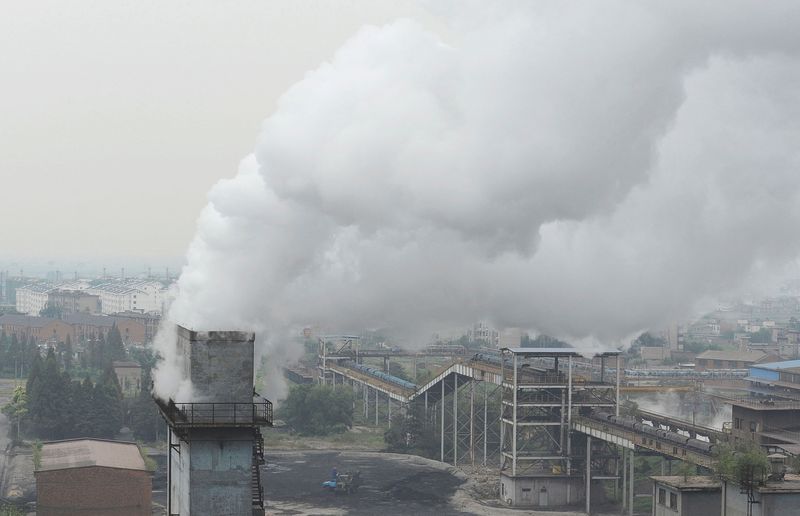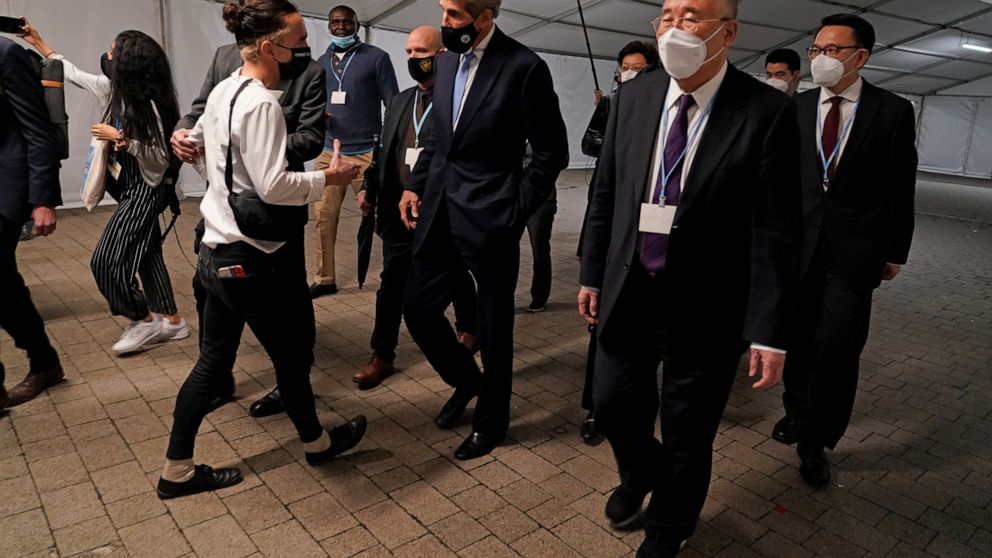
FILE PHOTO: Smoke billows from a chimney at a coking factory in Hefei, Anhui province October 2, 2010. REUTERS/Stringer/File Photo
November 13, 2021
By Jake Spring and Kate Abnett
(Reuters) – Negotiators began to close in on a deal to settle rules for carbon markets on Saturday, as talks extended into overtime at the COP26 U.N. climate summit.
New draft documents released early Saturday on implementing Article 6 of the 2015 Paris Agreement suggest progress around all three of the key sticking points that have skuppered a deal on the issue at the past two U.N. climate conferences.
Article 6 would set the rules allowing countries to partially meet their climate targets by buying offset credits representing emissions cuts by others.
Companies as well as countries with vast forest cover are keen for a robust deal on government-led carbon markets in Glasgow, in hopes also of legitimising the fast-growing global voluntary offset markets.
But balancing those interests against worries that offsetting will go too far in allowing countries to continue emitting climate-warming gases has made some wary of a hasty deal.
TAXING TRADES
On the issue of whether certain carbon trades should be taxed to fund climate adaptation in poorer nations, the latest proposals offer a two-track approach.
Bilateral trades of offsets between countries would not face the tax. That suggests capitulation to rich nations including the United States, which had objected to poor countries’ demands for the levy.
In a separate centralised system for issuing offsets, 5% of proceeds from offsets will be collected to go toward an adaptation fund for developing countries.
Also in that system, 2% of the offset credits will be cancelled. That aims to increase overall emissions cuts by stopping other countries using those credits as offsets to reach their climate targets.
OLD CREDITS
Another stubborn roadblock had been whether carbon credits created under the old Kyoto Protocol, the Paris Agreement’s predecessor, should be included in the new offset market system.
Negotiators had been wrangling over a compromise that would set a cut-off date, with credits issued before that date not being carried forward.
The latest text would carry over any offsets registered since 2013. That would allow 320 million offsets, each representing a tonne of CO2, to enter the new market, according to an analysis by the NewClimate Institute and Oko-Institut non-profits.
Campaigners had warned against flooding the new market with old credits, and have raised doubts about the climate benefits of some.
The latest compromise got a mixed response.
The 2013 date “is not good. So now it will be buyer countries’ jobs to just say ‘no’ to them,” said carbon markets expert Brad Schallert with non-profit World Wildlife Fund.
Some countries said it was unfair that old credits would be allowed in the new market, while they feared credits awarded under a forest scheme known as REDD+ were not explicitly included.
“Panama will not accept the proposed text in Article 6 as it currently stands,” Juan Carlos Monterrey Gomez, lead negotiator for Panama, said. “Forests must be part of this deal. If not, no way, no how, no deal.”
A negotiator from another country told Reuters that in their view, the draft proposal could include such forest credits.
“DOUBLE COUNTING”
One of the most contentious points had been on the question of whether credits could be claimed by both the country selling them, and the country buying.
A proposal by Japan may have resolved the issue, and appears to have backing from both Brazil and the United States. Brazil’s past insistence on allowing double counting had torpedoed an Article 6 deal in the past.
Under the new proposal, the country that generates a credit would decide whether to authorise it for sale to other nations to count towards their climate targets.
If authorised and sold, the seller country would add an emission unit to its national tally and the buyer country would deduct one, to ensure the emissions cut was counted only once between countries.
The same rules would apply to credits used more broadly toward “other international mitigation purposes” – wording that some experts said could include a global scheme for offsetting aviation emissions, ensuring double counting doesn’t happen there too.
“It’s a strong text on double counting,” said Kelley Kizzier, a vice president at the Environmental Defense Fund, who has chaired the Article 6 talks at past U.N. summits. “It does what it needs to do.”
(Reporting by Jake Spring and Kate Abnett; Additional reporting by Valerie Volcovici; Editing by Katy Daigle and Jan Harvey)

